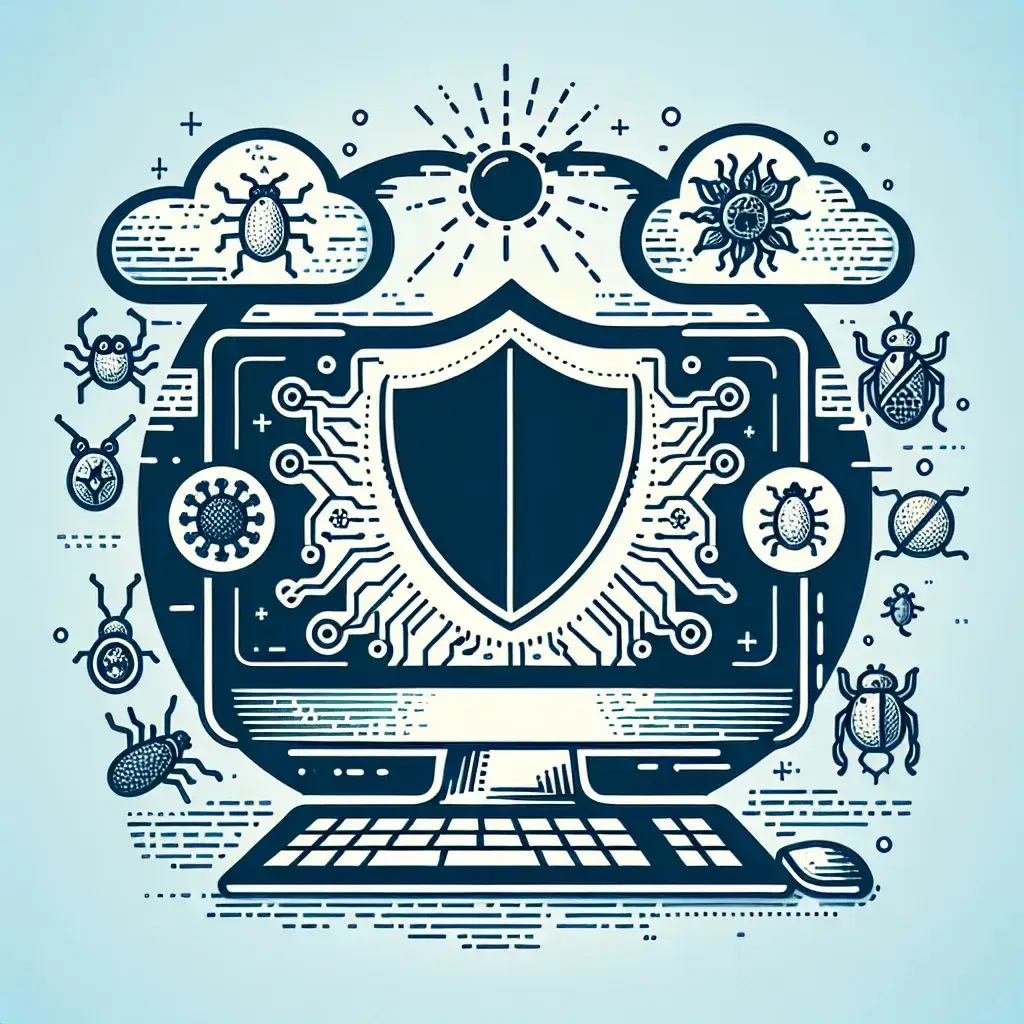In today’s digital age, protecting your computer from viruses and malware is more critical than ever. Cyber threats are constantly evolving and can compromise sensitive information, disrupt your daily activities, and lead to significant financial losses. This article will provide you with comprehensive strategies to safeguard your computer from these threats.
Understanding the Threats
To effectively protect your computer, it’s essential to understand the various types of threats you may encounter:
| Threat | Description |
|---|---|
| Virus | A type of malicious software that can replicate itself and spread from one computer to another. |
| Malware | General term for any software designed to harm or exploit computers, including viruses, spyware, and ransomware. |
| Ransomware | Malware that encrypts your files and demands payment for the decryption key. |
| Spyware | Software that secretly monitors user activity and collects personal information. |
| Adware | Software that automatically displays or downloads advertising material. |
Install Reputable Antivirus Software
The first step in protecting your computer is to install reputable antivirus software. This software can detect, quarantine, and remove various types of malware from your system. Some of the leading antivirus programs include:
- Norton
- McAfee
- Kaspersky
- Bitdefender
- Avast
Ensure that your antivirus software is always up-to-date to protect against the latest threats.
Enable Firewall Protection
Firewalls act as a barrier between your computer and potential threats from the internet. Most operating systems come with a built-in firewall that you should enable for added protection. Additionally, configuring your firewall settings to suit your browsing habits can help prevent unauthorized access to your network.
Keep Your Operating System and Software Updated
Software updates often include security patches that address vulnerabilities in your system. Regularly updating your operating system and other installed software can significantly reduce the risk of malware infections. Most operating systems allow you to enable automatic updates, ensuring you never miss a critical security patch.
Be Cautious with Email Attachments and Links
Emails are a common method for cybercriminals to deliver malware. Be cautious when opening email attachments or clicking on links, especially if the email is from an unknown sender. Here are some tips to stay safe:
- Verify the sender’s email address.
- Avoid opening attachments or clicking on links from unknown senders.
- Use email filtering tools to reduce spam and phishing attempts.
Download Software from Trusted Sources
Downloading software from unverified sources can expose your computer to malware. Always download software from trusted and official websites. Additionally, avoid using pirated software, as it may be bundled with malicious programs.
Enable Multi-Factor Authentication
Multi-Factor Authentication (MFA) adds an extra layer of security to your accounts. By requiring multiple forms of verification, MFA makes it more difficult for cybercriminals to gain unauthorized access. Enable MFA on all accounts that support it, such as email, social media, and banking applications.
Use Strong, Unique Passwords
Weak passwords are an easy target for cybercriminals. Use strong, unique passwords for each of your accounts to enhance security. A strong password typically includes:
- At least 12 characters
- A mix of uppercase and lowercase letters
- Numbers and special characters
Consider using a password manager to keep track of your passwords securely.
Regularly Back Up Your Data
Backing up your data ensures that you can recover your files in case of a malware attack. Schedule regular backups to an external hard drive or cloud storage service. Ensure that backups are encrypted for added security.
Practice Safe Browsing Habits
Your browsing habits can significantly impact your computer’s security. Follow these tips to reduce the risk of malware infections:
- Avoid visiting suspicious websites.
- Be cautious when downloading files from the internet.
- Use a secure browser and enable privacy settings.
- Install browser extensions that enhance security, such as ad blockers and anti-phishing tools.
Educate Yourself and Stay Informed
Cyber threats are constantly evolving, so it’s essential to stay informed about the latest security practices and threats. Regularly visit reputable cybersecurity websites and subscribe to security newsletters to keep up-to-date with current trends.
Conclusion
Protecting your computer from viruses and malware requires a combination of proactive measures and best practices. By installing reputable antivirus software, enabling firewalls, keeping your system updated, and adopting safe browsing habits, you can significantly reduce the risk of cyber threats. Remember to stay informed about the latest security trends and always be cautious online. With these strategies in place, you can safeguard your computer and personal information from potential harm.

